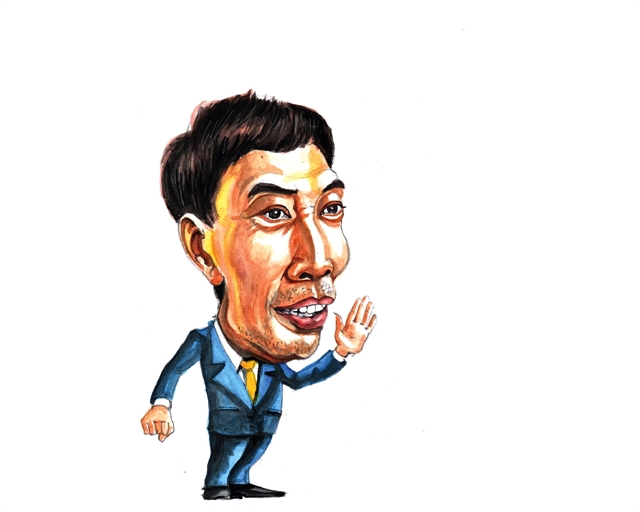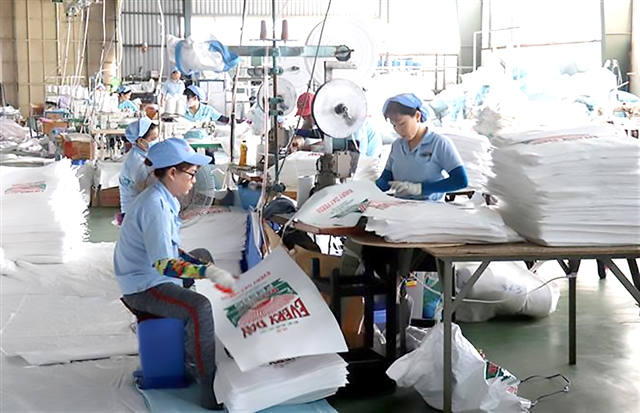 Economy
Economy

 |
Võ Trí Thành*
On June 19, the State Bank of Vietnam (SBV) decided to cut regulatory interest rates for the fourth time since the beginning of the year. The pace of interest rate cuts of the central bank is very appropriate, showing both its caution and attention to timing with developments in the market and the economy.
The interest rate adjustments are also signals of a shift in implementing the monetary policy of the central bank toward putting more weight on supporting businesses, thereby promoting growth and pausing the fight against inflation.
With both external and internal conditions more or less favourable for the interest rate cut, it is possible that the central bank will continue further easing its monetary policy.
Standard Chartered Bank, in a recently issued report on Việt Nam’s macro-economy, predicted slow GDP growth in Q2 and also suggested that the SBV still has room to cut rates.
Why the rate cut?
The pressure to increase interest rates and exchange rates from the outside has been decreasing significantly. Many countries are now executing a softer interest rate policy with the magnitude and frequency of interest rate hikes being reduced.
The US Federal Reserve kept interest rates unchanged in its latest meeting on June 15. Although it still signalled two more rises likely from now to the end of 2023, the total amount is forecasted to range from just 0.25 to 0.5 percentage points. It might even slightly cut rates from the beginning of 2024. The average interest rate level in Việt Nam has declined by 1-1.5 per cent.
From the beginning of 2023 until now, the SBV has purchased a large amount of foreign currency to supplement its reserves, contributing to keeping the foreign currency market stable. The USD/VNĐ exchange rate even reduced slightly by 0.57 per cent compared to the beginning of the year.
Inflation, although still high, has been decreasing since February 2023. The consumer price index (CPI) in the first six months of this year increased by 3.29 per cent year on year, down from the increase of 3.55 in the first five months and 3.84 per cent in the first four months of 2023 and 4.89 per cent of January of this year. The average CPI for the whole year is expected to be under 4 per cent for the whole year as per the goal set by the National Assembly.
The domestic money market is basically stable, with abundant liquidity in the banking system which was evidenced by the sharp drop in interbank interest rates. This is because demand for credit was low in the context of shrinking exports and sluggish industrial production. According to the SBV, in the first six months of the year, the credit growth rate only reached 3.36 per cent compared to the beginning of the year. Meanwhile, the target set for the year is 14-15 per cent.
The macro-economic data in the first half of the year released by the General Statistics Office (GSO) late last week shows that the country’s economy has some signs of improvement but the upturn remains weak, amid significant downside risks. The main growth drivers such as exports, private investment, foreign direct investment (FDI) and industrial production have lost their momentum.
According to the GSO, Việt Nam’s gross domestic product (GDP) grew about 3.72 per cent year on year in the first half of this year. The expansion is only higher than the 1.74 per cent recorded in the corresponding period of 2020 during the 2011-23 period.
In the second quarter of the year, GDP expanded by 4.14 per cent from the same period of 2022.
 |
| Production at the Hà Tiên Packaging JSC. With easier and low-cost access to capital, firms will have more incentives to expand production and business, thereby contributing to supporting socio-economic recovery and development. — VNA/VNS Photo Lê Huy Hải |
Impact of interest rate cuts on businesses
The reduction of policy interest rates will support credit institutions in accessing capital from the central bank through tools such as rediscounting, refinancing, and interbank lending. This will facilitate credit institutions to continue reducing deposit and lending interest rates. Declining interest rates on both old and new loans will help businesses and borrowers reduce financial costs and avoid the risks of bad debts.
With easier and low-cost access to capital, enterprises will have more incentives to expand production and business, thereby contributing to supporting socio-economic recovery and development.
At the same time, when credit grows more rapidly, lenders will have more income.
A decrease in interest rates will have a positive effect on the stock and real estate markets as investors may partially shift from savings to securities or buying real estate with the desire to seek higher returns along with the expectation of the stock market's recovery or prospects of lower real estate costs. However, this depends a lot on each investor's risk appetite because investing in securities and real estate is riskier than savings.
Despite its necessity, however, lowering interest rates is certainly not a panacea. The target of 6.0 per cent GDP growth, without mentioning the 6.5 per cent that Việt Nam has set for this year, might be beyond reach unless other measures are drastically carried out.
Risk warning
From the beginning of 2023 until now, operating interest rates have had a total reduction of 0.5-2.5 per cent per year after four adjustments. The continued reduction in the operating interest rates of the central bank confirms and establishes a trend of interest rate reduction for the market in the coming time, facilitating credit institutions to be bolder and more drastic in reducing lending rates.
However, policies often take time to have a real impact on business activities, not to mention the fact that the capital absorption capacity of enterprises is very weak. Therefore, without other measures, the continuous reduction of operating interest rates also implies some risks. For example, cheap capital would flow to high risk-high return sectors.
At this time, the more important issue for businesses is to have more orders from both local and foreign markets. Now that export orders are contracting - Việt Nam saw a decline of export-import turnover of 15.2 per cent to $316.65 billion in the first six months of the year, domestic consumption demand and tourism is expected to be the main driving force for growth.
Still, local purchasing power is also showing signs of sluggishness. Total revenue of retail sales and services in the period experienced a year-on-year rise of 10.9 per cent, while the figure for 2022 was 12.2 per cent.
A bright spot in the macro-economic picture is the number of international tourists coming to the country from January to June this year which reached 5.57 million, nine times the figure of the same period last year.
It is critical to stimulate local consumption demand and diversify foreign markets and partners by taking advantage of free trade agreements. Demand-stimulating solutions such as VAT reduction and tax arrears relaxation need to continue to be implemented forthrightly. The disbursement of public investment must also be accelerated.
Monetary policy and fiscal policy must be carried out synchronously. The way monetary and fiscal policy interact with each other matters for the health of the economy. A good combination of the two policies will possibly create a "take-off" effect.
Recently, a new e-visa policy approved by the National Assembly is highly appreciated as it would contribute to further revitalising tourism - a great source of income. Besides, a new National Assembly resolution that grants increased autonomy to HCM City - the country's biggest economic locomotive - taking effect on August 1, is expected to be a catalyst the development of the city, the southern key economic region as well as the country at large.
*Võ Trí Thành is a senior economist at the Central Institute for Economic Management (CIEM) and a member of the National Financial and Monetary Policy Advisory Council. A doctorate in economics from the Australian National University, Thanh mainly undertakes research and provides consultation on issues related to macroeconomic policies, trade liberalisation and international economic integration. Other areas of interest include institutional reforms and financial systems. He authors Viet Nam News column Analyst’s Pick.




